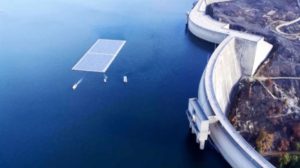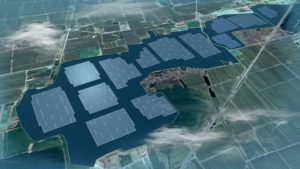In recent decades, dam-building engineering and construction firms–and their power utility clients—have spent many millions of dollar in a attempt to promote hydroelectric dams as environmentally-friendly sources of clean power.
They have been largely successful in convincing voters, and are always ready to supply cash incentives when public leaders need a little more convincing. Recent research, however, shows that there’s seldom anything clean—or economically sensible—about hydroelectric power.
The methane given off by the vast amounts of rotting, flooded vegetation more than offsets any climate-friendly claims of fossil fuel-free energy. The economies, heritage, and livelihoods destroyed by flooded farms and ecosystems are seldom offset by the brief economic benefits of the dams.
The benefits are brief due to buildup of silt behind the dam, which gives most dams a very short lifetime, making them even more economically disastrous. That silt should have gone downstream to replenish eroded soils, which means the environmental devastation is below the dam as well, not just above the dam.
One of the surest ways of tracking down corrupt public officials has long been to find out who is championing new hydroelectric dams. This has certainly been true in Brazil, where the badly-planned Balbina hydroelectric plant has destroyed vast swaths of rainforest wildlife habitat and human communities, and which doesn’t even produce much power.
 The Balbina hydroelectric dam in Brazil’s Amazon rainforest is, according to more than one expert, the worst hydro plant in the world. With too little water to run its five giant turbines, it operates at a fifth of its 250-megawatt (MW) capacity.
The Balbina hydroelectric dam in Brazil’s Amazon rainforest is, according to more than one expert, the worst hydro plant in the world. With too little water to run its five giant turbines, it operates at a fifth of its 250-megawatt (MW) capacity.
The environmental and human costs required to build it were enormous and horrendous: In the 1980s, engineers flooded 900 square miles of rainforest, obliterating land occupied by indigenous tribes. And because of decomposing plant matter in the lake, Balbina may emit enough methane–an especially dangerous greenhouse gas–that its climate profile is no better than a coal plant, some scientists say.
But, if Balbina represents a low point for hydro, it represents an opportunity for solar. The lake connected with the site–the lake formed across indigenous lands–is ideal for a floating solar farm that’s greening the project just a little.
“This is one of the biggest environmental crimes that engineering has committed in this country,” said Brazil’s energy and mining minister Eduardo Braga when opening the solar farm last year. “How can we mitigate the cost of this crime? By improving the cost-benefit relationship of this power station.”
The French company behind the project in Brazil, Ciel & Terre (“sky and land”), also recently completed a similar installation in Portugal, at the Alto Rabagão Dam, and it’s working on deals in North America and South Asia.
It argues that putting panels into the waters above a dam enhances a site’s output, and makes use of spare storage and transmission capacity built in hydro projects, pharaonic or otherwise. Moreover, the panels offer power at peak times of day, and help to reduce evaporation and settle the water.
“When dams aren’t running at full capacity, you have a huge opportunity to use that existing infrastructure,” says Eva Pauly-Bowles, international sales director at C&T. “This is scalable as much as we want it, as much as the electrical infrastructure can take it.”
 A far larger such project–a full gigawatt–is already underway in China. The National Energy Agency (NEA) of Anhui province initiated a tender in 2016 for the development of 1,000 MWp of floating PV power.
A far larger such project–a full gigawatt–is already underway in China. The National Energy Agency (NEA) of Anhui province initiated a tender in 2016 for the development of 1,000 MWp of floating PV power.
Spread across a dozen sites, this will make up a third of the global FPV capacity forecasted for 2020. With this contract, the NEA aims to bolster energy infrastructure and environmental quality in this Eastern province, where intensive coal-mining operations have left vast, open-air reservoirs through a combination of land subsidence and flooding.
The project has stood out as a top priority for the forward-thinking province ever since it was launched. Nine companies have won the opportunity to equip these inland reservoirs with FPV systems before the end of the year.
The floating PV group Ciel & Terre® International are steaming ahead on a 70MWp complex, in a project headed by Chinese RE developers CECEP. The state-owned company called on C&T for their unique experience in the floating PV sector, selecting the European Hydrelio® system for its track-record and signature reliability. With an installed fleet of some 80 plants, C&T has won its second Chinese contract with this tender, as float manufacturers and engineering subcontractors for the complex’s design and installation.
“China is emerging as a major market for FPV”, shared Philippe Deschamps, chairman for C&T’s Chinese branch. “We’re proud to be completing this first phase with CECEP ; it’s a pushing-off point for us to capture an important section of the tender and take-on great new opportunities in Asia.”
Construction works began earlier this month, and are scheduled to be completed by Q4 of 2017. The site features several reservoirs where over 194,000 PV modules, divided between 13 floating arrays, will generate 82 GWh in their first year, supplying electricity to some 20,910 homes. All floats for these platforms will be produced locally to optimize transportation costs, minimize the project’s carbon footprint and promote employment in the area.
The company explains that many countries lack the necessary space to install large scale ground-mount solar systems. In parallel, with small and medium rooftop systems in the housing and in industry, large-scale floating power plants are necessary for the solar energy to contribute to the energy mix. As authorities wish to avoid taking away large farmlands for ground-mount solar systems, we must find acceptable ecological alternative solutions.
 There many opportunities on manmade inland water bodies in Europe and many other countries. Quarrie lakes, dams, irrigation reservoirs, water-treatment sites or lands liable to flooding: possibilities for the installation of floating PV power plants are almost endless. And most of the time, such sites are close to a grid connection point. As an example, the state of Karnataka, in India, has 36,000 irrigation lakes of more than 24 acres, whilst farmland and electricity are missing.
There many opportunities on manmade inland water bodies in Europe and many other countries. Quarrie lakes, dams, irrigation reservoirs, water-treatment sites or lands liable to flooding: possibilities for the installation of floating PV power plants are almost endless. And most of the time, such sites are close to a grid connection point. As an example, the state of Karnataka, in India, has 36,000 irrigation lakes of more than 24 acres, whilst farmland and electricity are missing.
To meet this need, Ciel & Terre developed and launched their patented floating technology Hydrelio® as a reliable and cost-effective technology, so that floating solar systems can represent a serious alternative to ground-mounted solar systems.
Designed to resist a wide variety of natural conditions, and to produce cost-effective solar electricity, the Hydrelio® solution allows the creation of large scale floating solar systems, and thereby contribute to a better energy balance.
This new approach can help repurpose decrepit sites worldwide, including contaminated site where the funding remediation isn’t yet possible, as productive assets once again.
All images courtesy of Ciel & Terre.

